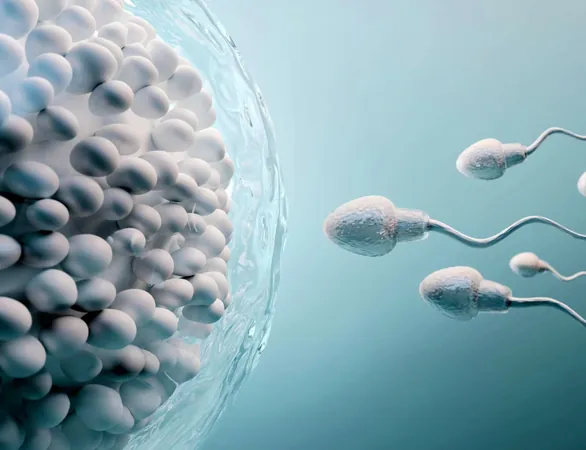
Unlocking the Secrets of Sperm: The Heat-Activated Switch Revolutionizing Fertility
2025-05-05
Author: Ying
Mammalian sperm have a fascinating quirk: they actually prefer cooler temperatures, thriving below the normal body heat of mammals. But how do they manage to survive the warmer conditions of the female reproductive tract during fertilization? Recent groundbreaking research from Washington University School of Medicine in St. Louis reveals a surprising answer.
The Temperature Secret Behind Sperm Mobility
When sperm enter the warmth of the female reproductive tract, they respond by ramping up their activity. Instead of swimming calmly, they transition to a vigorous, whip-like thrash, allowing them to effectively penetrate the egg for fertilization. This discovery not only shines a light on male fertility but also suggests new avenues for contraception.
Introducing CatSper: The Sperm's Heat-Activated Switch
At the core of this phenomenon is a unique protein found on the surface of mammalian sperm known as CatSper. This protein controls the influx of ions that power the sperm's tail movements. Remarkably, research has shown that temperatures above 38°C (100.4°F) activate CatSper, triggering a hyperactive state essential for successful fertilization. As Dr. Polina Lishko, a lead researcher, states, "Our work has uncovered a temperature-controlled switch in sperm that heightens their movement at the perfect time for fertilization."
How Evolution Keeps Sperm Cool
The evolutionary design of mammals protects sperm by keeping them cool, highlighted by the anatomical fact that testicles hang outside the body. This cooling mechanism allows sperm to remain dormant until they enter a warmer environment where activation can occur. Other mammals have unique adaptations as well — dolphins cool their blood through their fins, while elephants do so via their ears.
Targeting CatSper for Contraception and Fertility Solutions
CatSper's specific role in sperm opens the door for targeted therapeutic approaches. Lishko proposes an innovative strategy: instead of trying to inhibit CatSper, scientists could activate it prematurely, depleting sperm energy before they reach the egg. Such a method could serve as a novel form of contraception without impacting overall body health.
The Female Side: Aging Ovaries and Reduced Fertility
While sperm require heat for activation, the female reproductive system faces its own challenges with age. Researchers studied 62 human ovaries from donors aged 20 to 77 and found that different regions of the ovaries age at different rates. Notably, the ovarian cortex, housing immature eggs, begins to decline after age 40, affecting the support system crucial for fertility.
Fertility Preservation for Women
Within aging ovaries, certain cells show significant aging, with a particular increase in fibroblasts that contribute to a stiffening process. This deterioration is partly due to reduced TGF-beta signaling, which helps regulate repair and inflammation, leading to a decline in the ovarian environment and affecting egg viability.
New Horizons for Fertility Treatments
This dual perspective on fertility — activation for men and preservation for women — offers a comprehensive understanding that could inform next-generation fertility treatments. Innovative therapies might target CatSper activation in men and enhance TGF-beta signaling in women, addressing their distinct reproductive challenges.
The implications of this research, published in Nature Communications, mark a significant leap forward in our understanding of fertility, paving the way for treatments that could support both partners in the journey to parenthood.


 Brasil (PT)
Brasil (PT)
 Canada (EN)
Canada (EN)
 Chile (ES)
Chile (ES)
 Česko (CS)
Česko (CS)
 대한민국 (KO)
대한민국 (KO)
 España (ES)
España (ES)
 France (FR)
France (FR)
 Hong Kong (EN)
Hong Kong (EN)
 Italia (IT)
Italia (IT)
 日本 (JA)
日本 (JA)
 Magyarország (HU)
Magyarország (HU)
 Norge (NO)
Norge (NO)
 Polska (PL)
Polska (PL)
 Schweiz (DE)
Schweiz (DE)
 Singapore (EN)
Singapore (EN)
 Sverige (SV)
Sverige (SV)
 Suomi (FI)
Suomi (FI)
 Türkiye (TR)
Türkiye (TR)
 الإمارات العربية المتحدة (AR)
الإمارات العربية المتحدة (AR)